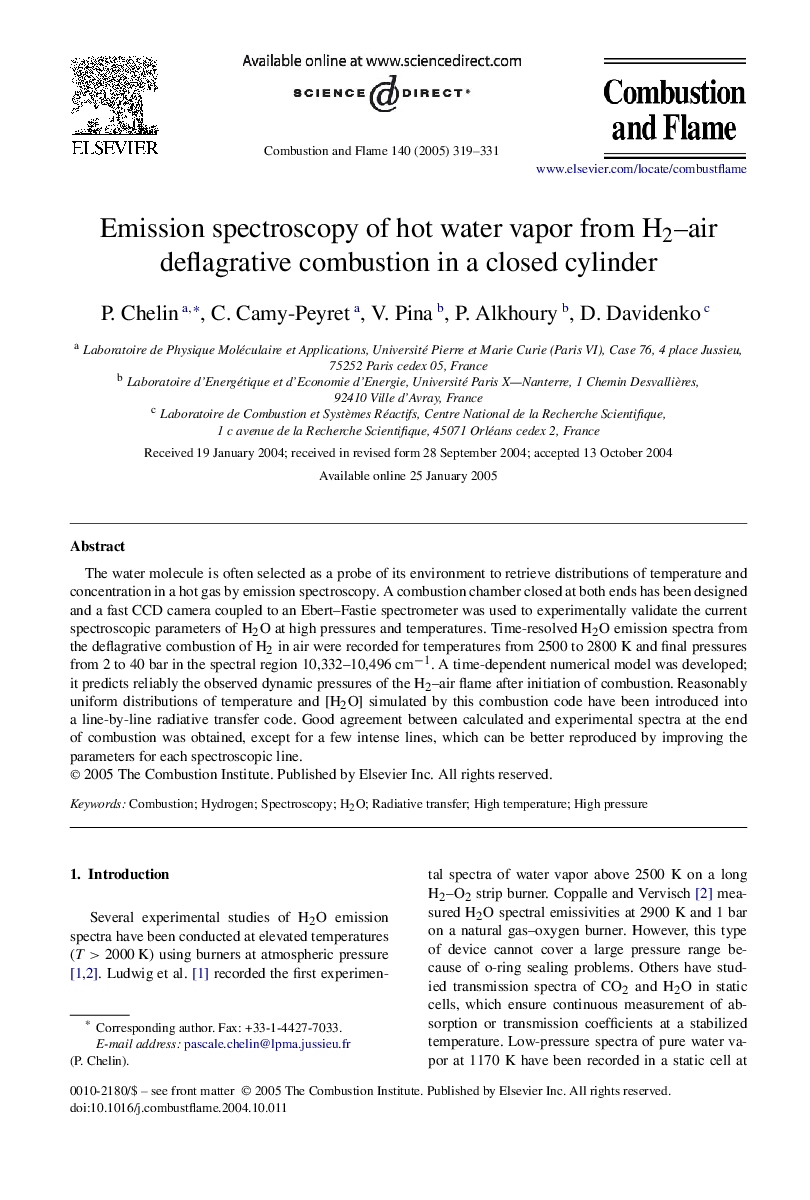| Article ID | Journal | Published Year | Pages | File Type |
|---|---|---|---|---|
| 9624536 | Combustion and Flame | 2005 | 13 Pages |
Abstract
The water molecule is often selected as a probe of its environment to retrieve distributions of temperature and concentration in a hot gas by emission spectroscopy. A combustion chamber closed at both ends has been designed and a fast CCD camera coupled to an Ebert-Fastie spectrometer was used to experimentally validate the current spectroscopic parameters of H2O at high pressures and temperatures. Time-resolved H2O emission spectra from the deflagrative combustion of H2 in air were recorded for temperatures from 2500 to 2800 K and final pressures from 2 to 40 bar in the spectral region 10,332-10,496 cmâ1. A time-dependent numerical model was developed; it predicts reliably the observed dynamic pressures of the H2-air flame after initiation of combustion. Reasonably uniform distributions of temperature and [H2O] simulated by this combustion code have been introduced into a line-by-line radiative transfer code. Good agreement between calculated and experimental spectra at the end of combustion was obtained, except for a few intense lines, which can be better reproduced by improving the parameters for each spectroscopic line.
Related Topics
Physical Sciences and Engineering
Chemical Engineering
Chemical Engineering (General)
Authors
P. Chelin, C. Camy-Peyret, V. Pina, P. Alkhoury, D. Davidenko,
